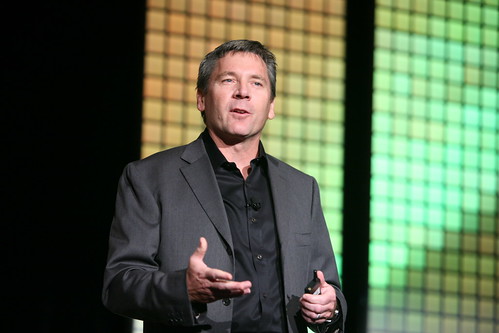 Rob Carter, CIO of FedEx led the conference on Tuesday with his presentation, “Connectedness: Changing what’s possible.”
Rob Carter, CIO of FedEx led the conference on Tuesday with his presentation, “Connectedness: Changing what’s possible.”
He began his talk discussing what he admittedly said we already know, a history of networks: distribution, electrical, telecommunications, and then offered a little of what we didn’t know, a history of FedEx.
All that history proves that none of these communications could have existed, even FedEx, if there wasn’t a strong network behind it. Carter is looking to expand FedEx’s network because it’s viable and that viable networks always expand.
FedEx’s first step to expansion is the realization that FedEx.com should no longer be confined to being just a destination site. As a result FedEx.com has been exposing all its services to other entry points. Here are some examples:
- QuickShip – a .NET shipping application embedded inside of Microsoft Outlook. Allows you to use all your contacts and stay within your addressing application.
- FedEx Mobile – Track packages through your iPhone or other mobile device.
- FedEx Desktop – Advanced tracking application developed in Adobe Air. Operates outside of the browser. Can see inbound and outbound packages. If an event happens with any of your packages, for example something has cleared customs or gets held up, you’ll get an alert.
- eBay ShipRush – Integrate FedEx into an eBay seller’s site and community.
Carter believes that enterprise 2.0 is about disassembling the walls of the enterprise. And for those of us who work in an enterprise environment, we know how difficult that can be. Think it’s difficult for FedEx? It was even tougher for the CIA. See the next post about “Building the 21st Century Intelligence Community.”
He closed with a George Colony quote that states, “Technology will change your customers. Customers will change your business.”
Make sure you check out the summary of all coverage from the Enterprise 2.0 Conference 2008 in Boston.
This post is cross-posted from the Enterprise 2.0 Blog.



